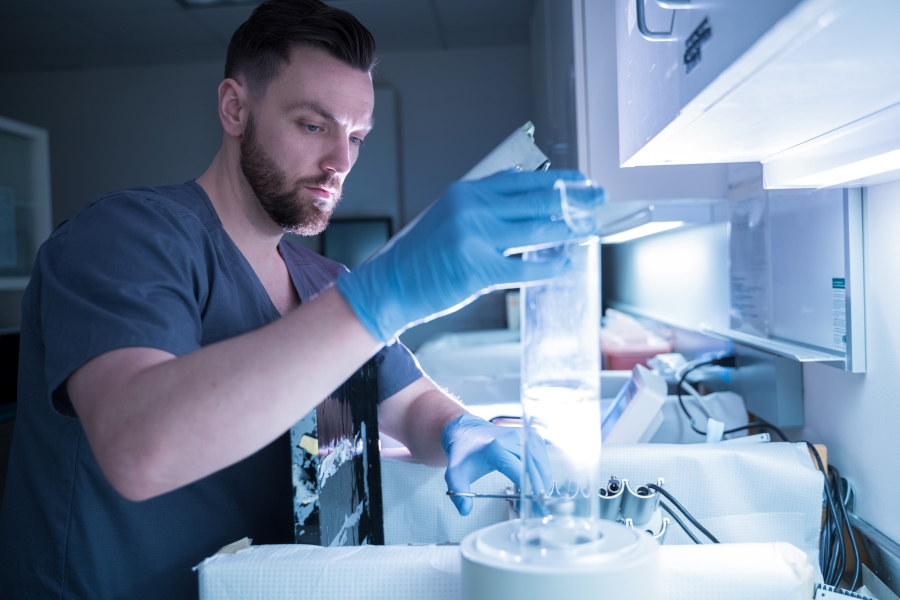Radioisotopes have revolutionized the field of medical diagnostics since their discovery. By harnessing the characteristic emissions of radioactive atoms, physicians can non-invasively visualize bodily processes at a molecular level. This has enabled early disease detection and more targeted treatment approaches.
Radiotracers and Their Uses
A variety of radioactive tracers have been developed for medical imaging. Perhaps the most commonly used is technetium-99m, which emits gamma rays detectable by gamma cameras. It is combined with chemicals that direct it to specific organs or tissues. For example, technetium-99m methyl diphosphonate is taken up by bones, enabling bone scans to detect fractures and tumors. Similarly, radioiodine-123 and iodine-131 are concentrated in the thyroid gland, allowing visualization of the thyroid and detection of abnormalities with SPECT or PET scans. Fluorine-18 fluorodeoxyglucose is a radioactive analog of glucose taken up by metabolically active tissues like cancer cells, helping localize malignant growths in PET imaging. Other commonly used radiotracers target the heart, lungs, kidneys, and red blood cells.
SPECT and PET imaging
There are two primary types of medical imaging that utilize radioactive tracers – single photon emission computed tomography (SPECT) and positron emission tomography (PET). SPECT cameras detect the gamma rays emitted by radioactive isotopes like technetium-99m, iodine-131, and indium-111. A computer analyzes the gamma ray emissions and produces 3D images showing how the radiotracer is distributed throughout tissues and organs. PET scanning uses radioactive tracers that emit positrons, like fluorine-18 and carbon-11. When a positron encounters an electron, the two particles annihilate each other, producing two gamma ray photons emitted at 180 degrees to each other. By detecting these photons using a PET scanner ring, images mapping the tissue distribution of the radiotracer can be generated. PET scans provide highly sensitive molecular information and have better resolution than SPECT, but are more expensive. SPECT is commonly used for bone, thyroid, lung, liver and kidney imaging while PET is used for diagnosing cancers, cardiovascular disease and infections.
Applications in Neurology
Neurological diagnostics is another area transformed by radioisotopes. SPECT scanning using tracers like technetium-99m ethyl cysteinate dimer can visualize brain activity and blood flow. This allows mapping of cognitive processes and detection of abnormalities associated with conditions like Alzheimer’s disease, stroke, epilepsy and tumor growths. PET scanning with fluorine-18 fluorodeoxyglucose enables physicians to directly image glucose metabolism in the brain, identifying areas of reduced metabolic activity that correlate with conditions like dementia. Another PET radiotracer, fluorodopa, tracks dopamine synthesis and uptake to help diagnose and monitor Parkinson’s disease. Functional MRI and other advanced imaging techniques provide anatomical details but radioisotope imaging gives insight into neurological function at the molecular level.
Role in Cardiology
Cardiac diagnostics have also hugely benefited from Radioisotopes. Technetium-99m based agents are routinely used to scan heart blood flow, viability of heart tissue and identify blocked heart arteries. Dipyridamole stress testing with technetium-99m agents is used to detect coronary artery disease by measuring changes in heart perfusion during pharmacologically induced stress. Thallium-201 is another cardiac perfusion radiotracer commonly used, although technetium-99m is preferred due to its more favorable imaging properties and lower radiation dose. PET scanning with radioactive rubidium or nitrogen is being increasingly used to accurately measure coronary blood flow and evaluate myocardium at risk. Radiotracers like fluorine-18 fluorodeoxyglucose also help identify inflamed heart tissue in conditions like myocarditis. With an aging population, radioisotopes play a crucial role in managing increasingly common cardiovascular diseases.
Role in Oncology
Oncology is the area that has seen the most dramatic developments with radioisotopes. Pioneering work with radioiodine changed the landscape of thyroid cancer management by enabling ablation of remaining thyroid tissue after surgery. Procedures like iobenguane scintigraphy and octreotide scans help localize neuroendocrine tumors. Bone scans with technetium-99m detect spread of cancers like prostate and breast cancer by identifying secondary tumors years earlier than conventional scans. However, the biggest impact has been from PET scanning which massively improves cancer staging by precisely delineating the extent and spread of primary and metastatic tumors. Landmark trials have proven the effectiveness of PET/CT in cancer types such as lung, colorectal and lymphoma. Pairing metabolic and anatomical data, it helps select appropriate treatment approaches and detects relapse earlier. Radioisotopes also have expanding roles in personalized therapies like radiolabelled cancer antibodies, delivering radiation directly to tumors. With early diagnosis, precision cancer management is becoming a reality through nuclear medicine techniques.
Radiation Safety Considerations
While diagnostic radioisotopes have enormous medical value, responsible use requires measures to limit radiation exposure. Technetium-99m, fluorine-18 and carbon-11 have very short half-lives, which helps reduce patient and environmental radiation doses. However, longer lived isotopes need special safety precautions during production, transportation, clinical use and disposal by nuclear medicine services. Strict radionuclide handling protocols and shielding engineering limits occupational radiation exposure. When no longer useful, radioactive waste needs secure long-term storage as it slowly decays. Regulatory oversight ensures nuclear medicine facilities follow standards to minimize radiation risks to patients, healthcare workers and the public, allowing continued benefit of these powerful diagnostic tools.
The field of nuclear medicine has grown tremendously, becoming indispensable to modern healthcare through radioisotope based diagnostics. Continuous research seeks new radiotracers targeting an ever wider array of molecular pathways. Coupled with technological advances in SPECT, PET and multi-modality imaging, radioisotopes are revolutionizing disease detection, guiding personalized treatment choices and precision medicine approaches. However, responsibility demands ongoing efforts to maximize medical benefit and minimize associated radiation risks. With proper management, nuclear medicine will transform healthcare for generations to come.




